Nestle, Palm Oil and Social Media, Oh My!By now it’s no secret Nestle is having some issues with their social media, one of the most talked about is their Fan Page fiasco. Greenpeace began the process with a report on Sinar Mas (whom Nestle used) harvesting palm oil, which is having a direct impact on the rainforest and orangutan populations. In March of this year, Greenpeace released a video depicting a man "taking a break" by biting into an orangutan’s finger (the video might be squeamish to some).Nestle promptly had it removed from YouTube, but it didn’t stop Greenpeace from posting it on Vimeo where it went viral. From there Greenpeace supporters flooded Nestle’s Fan Page and well, here we are today. Recently the dust is starting to settle, a little anyway, but there is still a lot to learn from what’s happened. I had the opportunity to talk with Marketing Pilgrim’s Frank Reed, about a few things to take away from what’s happened and how to prevent bad PR getting the best of you online. How did Nestle ruin their online reputation? Were they even ruined? In this day and age I wonder if it is possible to totally ruin your online reputation. People have short memories and are generally forgiving. In the case of Nestle there will be many who learn of Nestle’s efforts to make the palm oil situation right but the apparent unwillingness of many of the social media “protesters” to let them tell their story could actually end up working in Nestle’s favor. What could Nestle have avoided and did any warning signs appear before hand that could have alerted them to remain cautious? Well, if Nestle was aware of what their supplier was doing then they certainly were moving forward at their own risk. It would have made a great story for Nestle if they had identified the issue, ended the relationship then told their story. Whenever it looks like you have been “found out” there will be a price to pay in the online space. When are some constructive ways to respond to negative comments? Stay on message and don’t truly engage. Many negative commenters are looking for a fight. Stay on message. Keep telling the message that is moving toward a resolution and don’t “take the bait” to get into a shouting match. You’ll lose. Should people respond to every negative comment they receive be it on Facebook or other outlet? And if a negative comment is received should the comments be deleted? You should never delete negative comments unless they are truly defamatory to you or another or are obscene. Hopefully, you have put a clear policy together and made it available to participants as to what would cause a comment to be removed. If not you will look suspicious in removing anything from a platform that is intended to be open and conversational. Nestle did say that any pictures of their doctored logo would be removed. As for every negative comment being handled? Probably good to acknowledge the comments though and ask if they are willing to engage offline. If it starts to look like a “flame-fest” it is good to bow out gracefully and call for reasonable discourse. You are the site / brand owner after all and it is your turf so you can make the rules. Most people will see a reasonable attempt to handle an unreasonable person enough effort to seem genuine. Would you advise a dose of ‘reverse SEO’ for the negative comments? Reverse SEO can have a negative connotation especially if your problems and the responses from your audience re-warranted. What companies should be doing, however, is creating as many different outlets of information for the engines to “feed on” about the brand thus making it less likely for other results to float near the top. Google has a commitment to balanced results though so you better make your alternative offerings strong. Is it too late for Nestle? Should they just start over from scratch? It looks like their Facebook page is wrecked for now but this furor should die down especially if they have attended to the issue completely. The trouble with their Facebook page is that it has become a place where others are grousing about issues that aren’t even related to Nestle thus possibly killing any chance for that particular iteration of their Facebook presence to recover. They should consider a “do over” on that one area but once again this tactic will have its supporters and detractors as well. What are your top 5 things people/businesses can do to avoid having their reputation damaged online? 1. Keep their noses clean. Do good business and problems will be few. 2. Handle yourself professionally. No matter how bad the attack it should never warrant you dropping to the attacker’s level. It cheapens your image. 3. Provide many options for the engines with a variety of mediums like YouTube, blogs, alternate sites for specific data. 4. Be transparent. Admitting an issue will do much more good than harm. Covering it up and getting defensive though? Bad move. 5.Take the action that allows you to sleep at the end of the day knowing you did the best you could to be open, honest, transparent and available. Each situation will define these actions differently but work the moral compass angle. Frank Reed is the owner of FT Internet Marketing, Inc (www.frankthinking.com) that provides Internet marketing, social media, online reputation and copywriting services to the SME (small to medium enterprise) market. Frank is a daily contributor to Andy Beal’s Marketing Pilgrim and writes weekly for Mike Moran’s Biznology Blog. He does other stuff too so give him a call. Three days after this interview Nestle has posted an open letter to Greenpeace. It seems they are starting to move, or appear to, in the right direction. In addition Nestle has also created a second Fan Page, which seems to be geared more towards the United States audience in order to move away from the mess on their original page. And a third Fan Page which seems to be focusing more on their care to the community and environment. I’d like to ask you the reader, your thoughts on the new release from Nestle and what do you think these new Fan Pages will do for them? Check out the SEO Tools guide at Search Engine Journal. Nestle, Palm Oil and Social Media, Oh My! Do Negative Headlines Work?If you've dipped a toe or two into copywriting, one of the first things you'll learn about is the power of negativity. Words like "Don't" or "Stop" or "No" are powerful motivators when used correctly. But at the same time, they can be overkill when a message that's designed to provoke actually leaves your readers feeling cold.If you read a blog post with the headline: 5 Easy Ways to Improve Your Photography Skills It might tickle your interest. But throw a dash of the negative in there and you've got something like: For Best Results: Don't Ever Take Pictures from This Angle Which one would you be more likely to click on? When Negative Headlines Work BestNegative headlines work best when they alert and inform. Headlines commonly tell people that they can finally stop and rest easy with a specific solution. Negative headlines shouldn't, however, be used to imply a connection between the negative thing, and the person reading the article. For example:Stop Marketing like a Spammer: How to Get More Email Subscribers the Right Way Headlines like these can get the complete opposite reaction from your readers – in the "Who you callin' a spammer?" way. The rest of that headline will get completely ignored. Using Negativity to Pique CuriosityNegative headlines also work well when used to engage your reader's curiosity. Sure, we all love stories of triumph and success, but subconsciously, we're also drawn to the kinds of tabloid headlines that reveal a seedier, more secretive side to life. With that being said, you can also use negativity to stir up a desire to read more, such as:7 Things Your Doctor Will NEVER Tell You (Unless You Know How to Ask!) 10 Disturbing Secrets Every Waiter MUST Lie About to Keep Their Job The main thing to remember when using negativity in headlines is this – the best headline in the world won't motivate your reader to do anything if the rest of the body copy is bland, boring or unoriginal. Make it your mission to concentrate on unleashing a powerful headline which is then reinforced with heavy-hitting benefits that show the results of NOT taking action. Now it's Your Turn…Have you used negative headlines in your copy? What were your results? Have you ever read a particularly stirring headline that compelled you to want to know more? Tell me about it in the comments below!Check out the SEO Tools guide at Search Engine Journal. Do Negative Headlines Work? How To Motivate Employees to Contribute ContentSometimes it can be like pulling teeth to try and get others in your organization to contribute to your content development strategy. Of course the excuse is inevitable “I have no time” or “I am still working on it”, amongst probably hundreds of other reasons why employees can’t help. But its funny how when you add an incentive with it, everyone can somehow find time to contribute. Like magic, peoples schedules suddenly free up or that post they have been working on for 2-3 months, is finished the next day.Lets face it, many people are not motivated unless they are compensated for their time. Which is understandable. If someone is going to take time out of their day or work on something at night or on the weekend, they should see some reward or gain from it. Before we get into the different ways you can encourage employees to contribute content, it should be said that you should set standards to keep only high-quality content that is being produced. If you just say, we will give each employee $25 per post…you will be amazed at what will get put in the queue to be approved. Depending on your blog or type of content you are looking to create, try to make sure there are best practices being implemented. 
Performance-Based IncentivesThis is a fun way to add incentives to employee contributions. The goal behind this type of incentive is that the better your content performs, the better the incentive will be. Performance-based incentives can be number of comments, number of ReTweets, number of Facebook Shares, number of unique visitors, time on site, etc… This will encourage employees to take the extra time to create higher quality content, because the metric for compensation is performance-based. Creating a pay scale that correlates with performance would be a way to compensate each employee.Monetary IncentivesProbably the most used and easiest incentive program would be to simply pay an employee for each blog post they write. Typically between $25-$50/per post is a good range to start with. Of course you can have different pay levels depending on the completeness and effort that was put into the postCompany AcknowledgmentsFor the employees who are not motivated by money, sometimes giving kudus or acknowledgment across the company is just as effective. Especially for larger companies, employees who are looking to gain recognition among their coworkers and managers are great ways to get employees to contribute content. An idea could be to recognize the employee who wrote the most blog posts for that month, by sending out a company-wide email congratulating the employee.PTO IncentivesWhat employee wouldn’t like more paid time off? Giving employees additional days off or the ability to leave early one day, can possibly arm you with more content than you know what to do with. An idea would be for every blog post you write, you accrue a certain amount of additional PTO time. You can also wait until the end of the month and the person will the most posts written will get a day of PTO next month.End of Year PrizeSometimes the previous incentives I mentioned only work in the short-time and do not fulfill the companies long-term plans for content creation. A way to motivate employee for the long haul is to have a long-term incentive program. One idea would be to give away a vacation for 2 that can be redeemed by the winner at a time that is convenient to them. Another idea would be to give away gifts at the end of the year for the top contributors. You could also try a raffle where each post you write gives you an entry into the end of the year drawing.Check out the SEO Tools guide at Search Engine Journal. How To Motivate Employees to Contribute Content Advanced SEO Requires Good Analytics InformationGood quality analytics (such as Google Analytics or another paid analytics software packages) provides good and very useful information. If you pay attention to it you could very quickly increase the overall efficiency of your website. You just have to look at the numbers and list to what they tell you. The proof is in the pudding as they say and if you ignore your analytics information you could be missing out on a great deal of potential business and traffic.Here are some basic areas for you to review in order to find any holes in your website and to help you decipher data that you learn from your analytics: Conversions: In case you don't know, a conversion is a completed action on your website, such as lead, sign up, sale, etc. The most important factor (I think) to learn from your analytics software is the conversion data. Understanding and learning about how and where you conversions come from can help you make much more educated and better SEO, PPC and Social Media marketing decisions. I can't tell you how many people I still speak to think that the best goal for an SEO campaign is rankings or positioning. Sorry to break it to you, but it is not. Increasing conversions (and visitor growth) should be the starting goal(s) of your SEO and search marketing efforts. I won't get too deep into that as that is not the main point of this post J Bounce Rate: Whether you are looking at this overall or down to a single page if your bounce rate is really high try to figure out what is turning people off from that web page. It could be a variety of things depending on your business so take a deep look at your page. Is it too much info? Or a lack of info? Do you have too many ads on that specific page? It could also be a combination of all these items. It might just be that your page needs to have a serious over haul. Bounce rates vary for each client and industry but understanding what yours is and try to improve your bounce rate is very important. Visitors: When you start to really get into advanced SEO techniques you will need to understand even more so where all of your visitors are coming from. Visitor quality is just as important as visitor growth. You never want to rely on just one stream of traffic because if that stream dries up so does your business. You have to understand where your traffic is coming from because often times it might be from an area that you least expected it to come from. Analytics information allows you to find new locations along with locations of where you might be able to place yourself to find new traffic. Keywords: Analytics information will tell you what keywords your website traffic is using to find your website. This is a potential to really open things up for you as you grow your business online. As new keywords develop you can capitalize by finding new variations on those specific keywords and using them throughout your website. You have to look at your analytics information very closely otherwise you won't find those windows of opportunity to help improve your SEO and overall search marketing efforts. Analytics keeps your approach to marketing your website efficient and smooth. It is all about finding opportunities that could already exist right in front of you. Data and information that you can get from your analytics allows you to find those areas where you can really maximize your efforts in the online world. Check out the SEO Tools guide at Search Engine Journal. Advanced SEO Requires Good Analytics Information How to Keep an Eye on Your Competitors with SEJ ToolsI shared once a tip on how to track (and compare) competitors’ rankings with SEJ Tools. Today I am looking further at the feature that allows to watch your competitors grow to timely learn what they are doing.There’s one nifty feature inside SEJ Tools called Competitor Manager. It allows to easily compare your site with your competitors and offers a few other handy options. The tool can be found when you hover over DASHBOARD menu tab: 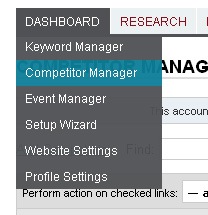 You can also allow SERPs tracking for all of those you add in bulk. This means that after you add your competitors, you can track his rankings at SERPs tracker: 
You can also export your competitors to a CSV file or remove them from the table: 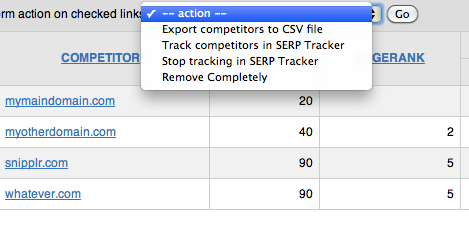 How to Keep an Eye on Your Competitors with SEJ Tools Link Builders' Toolkit Now Available (over at StayOnSearch) I wanted to let all of the Search Engine Journal readers know about a new product that I am offering on my blog called the Link Builders Toolkit. Personally I have always wanted a link building resource I could reference to find high-quality and relevant places to acquire backlinks. So over the years, I have been putting together an excel document of sites that I have come across that could help me with my link building efforts. I wanted to let all of the Search Engine Journal readers know about a new product that I am offering on my blog called the Link Builders Toolkit. Personally I have always wanted a link building resource I could reference to find high-quality and relevant places to acquire backlinks. So over the years, I have been putting together an excel document of sites that I have come across that could help me with my link building efforts.So finally the Link Builders Toolkit was created! What is the Link Builders Toolkit?The Link Builders Toolkit is the ultimate resource and collection of over 1400 websites to gain high-quality inbound links from. Each site has been hand-picked to find only the websites that are at least a PR 3 or higher. They are also organized by category so you can easily find the right type of sites, depending on the type of link building you are doing. This excel document saves hours and hours of manually trying to find places to acquire links from.This toolkit is perfect for Link Builders, SEO’s, Internet Marketers, and In-house Marketing teams! Over 1400 Sites to Acquire Links From:
For 1 Week: Get 30% Off the Link Builders Toolkit For the first week, I will be giving a 30% discount on the Link Builders Toolkit. To purchase, check out the Link Builders Toolkit page on my blog. I am also offering the tab that includes 160 Blog Directories for free. Feel free to download it here. |
| |


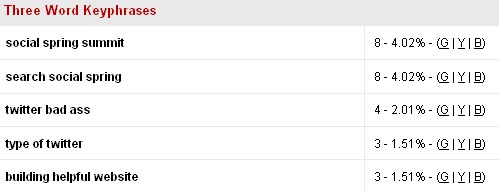
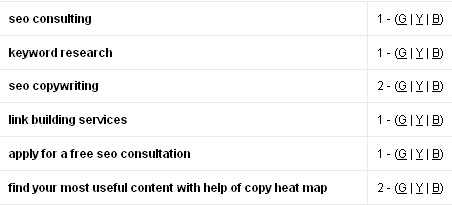
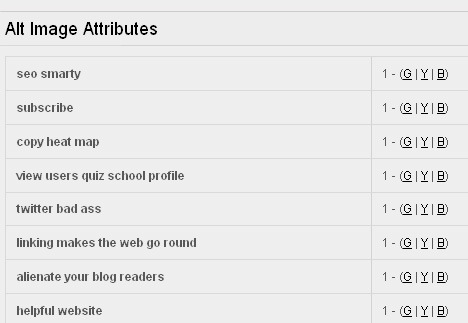
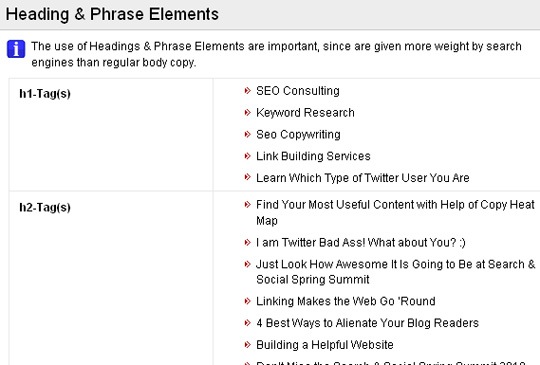
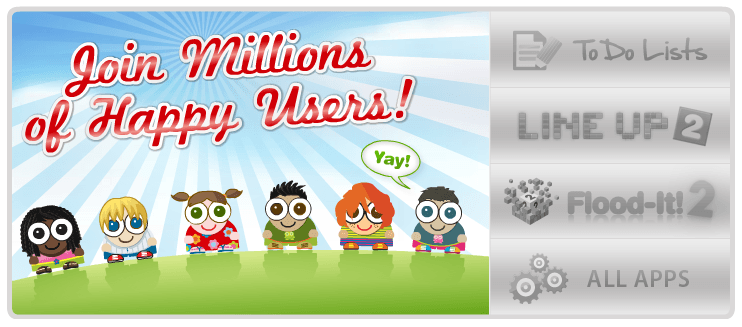


No comments:
Post a Comment